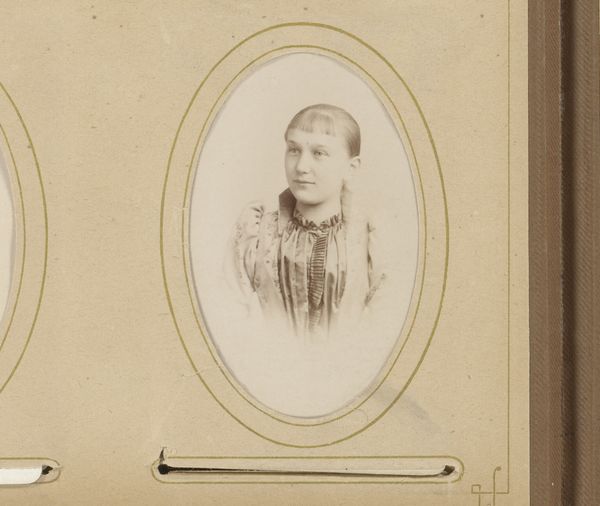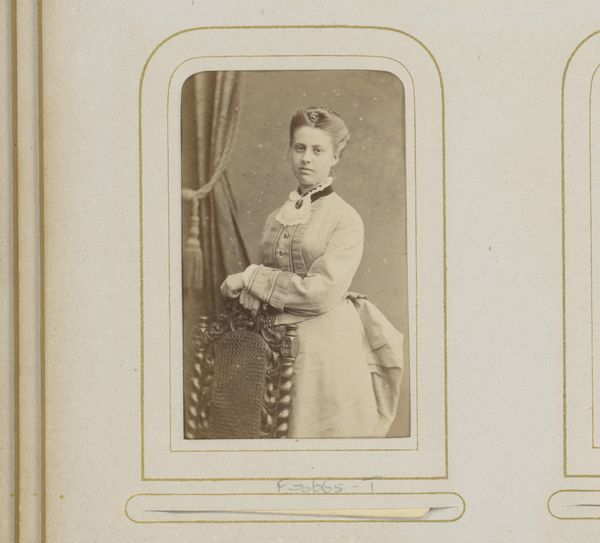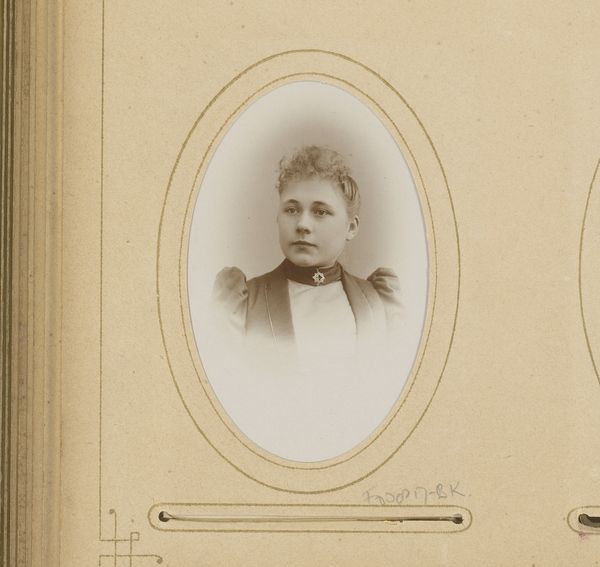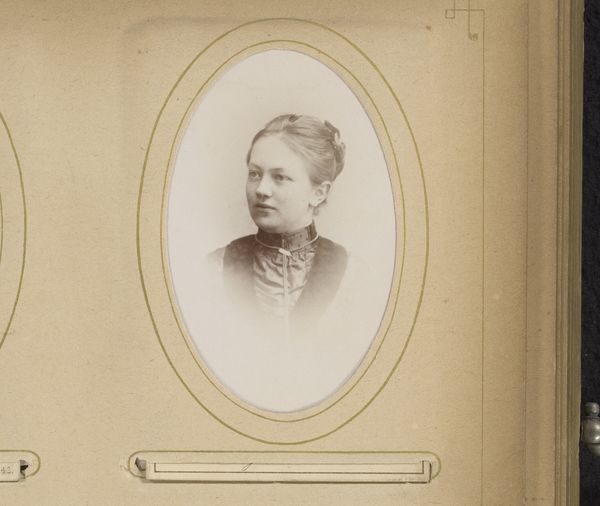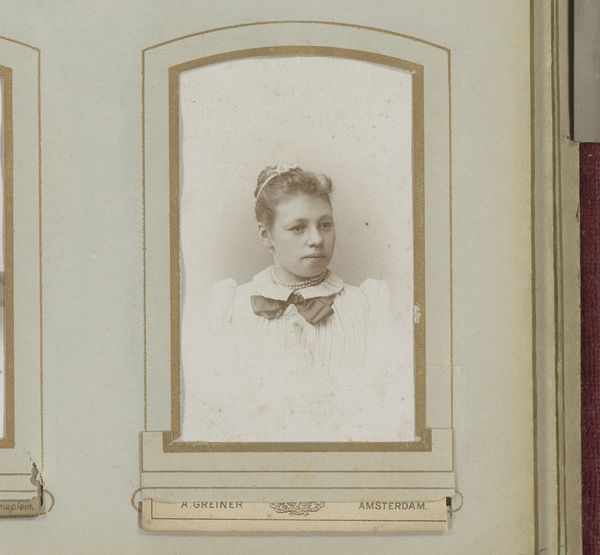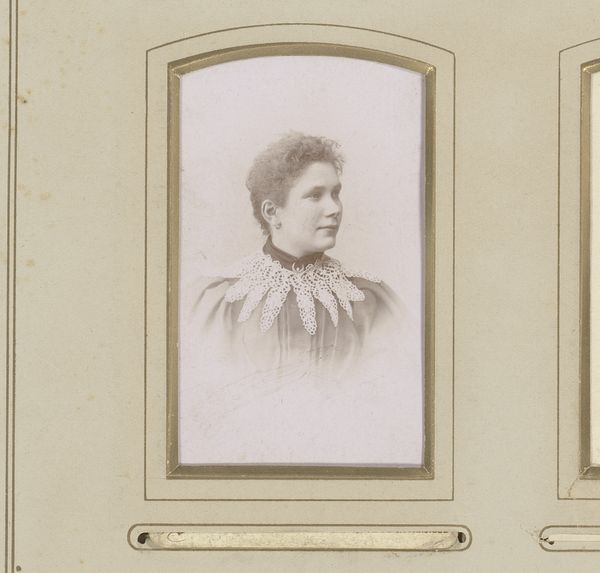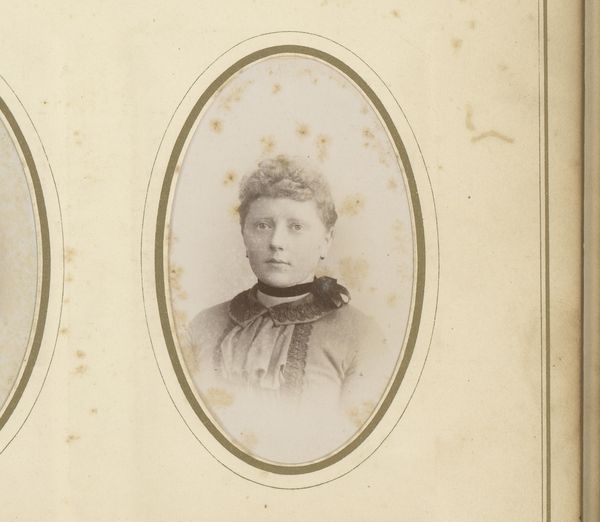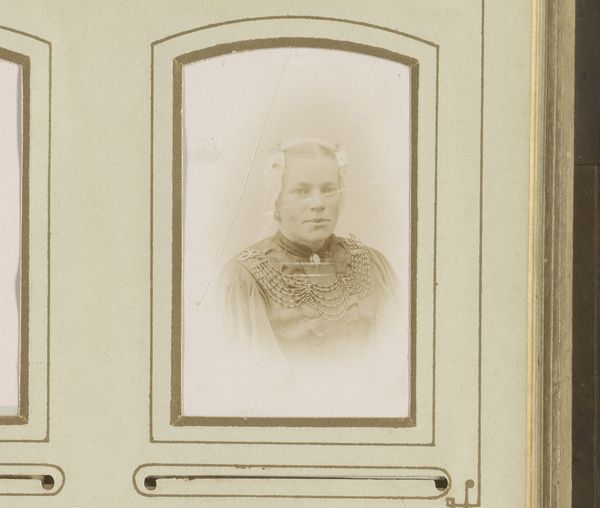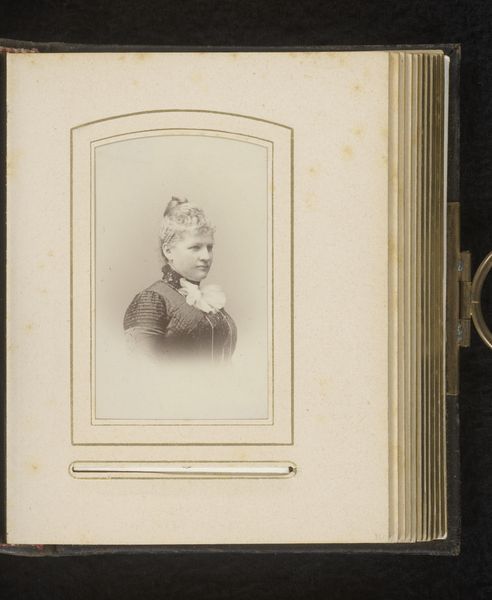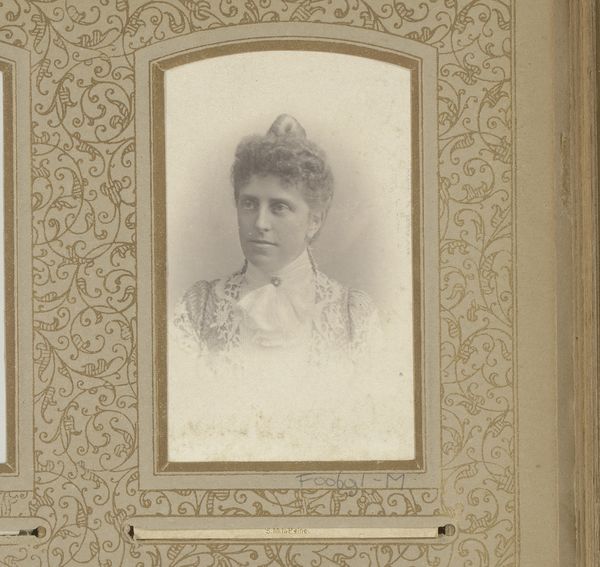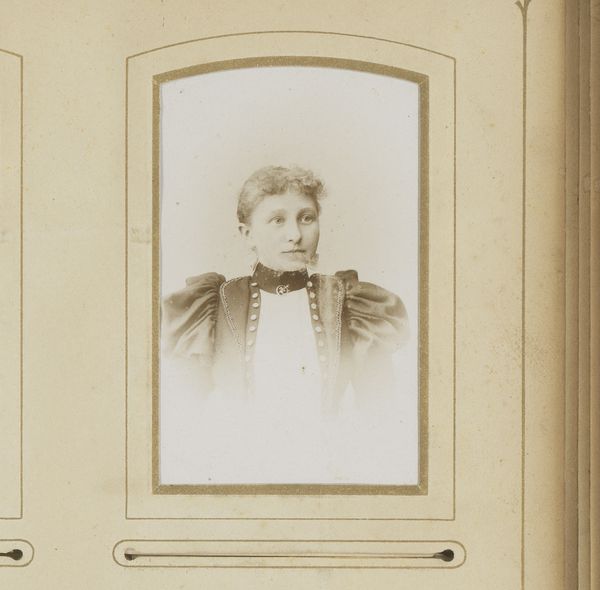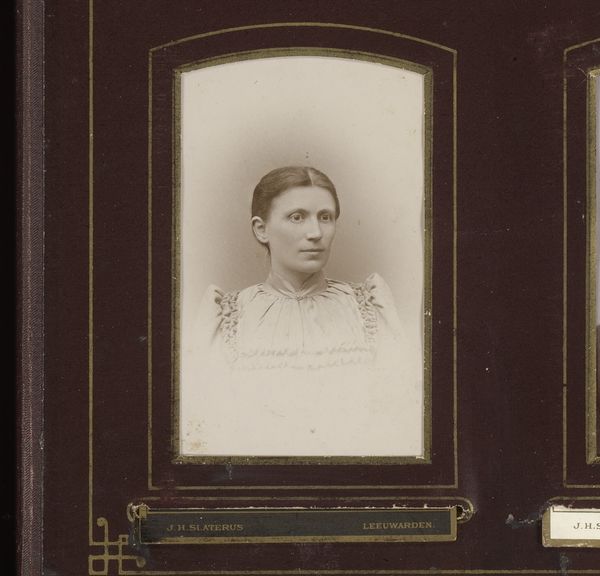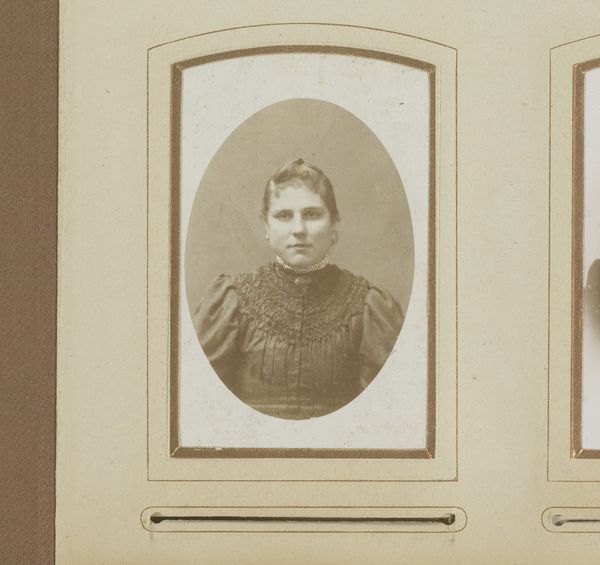
photography, albumen-print
#
portrait
#
aged paper
#
toned paper
#
photography
#
albumen-print
#
realism
Dimensions: height 82 mm, width 51 mm
Copyright: Rijks Museum: Open Domain
Curator: This albumen print, attributed to Gustav André Jr. captures a young woman between 1860 and 1900. It's titled "Portret van een jonge vrouw". What strikes you most when you look at it? Editor: The aged paper gives the photograph such a delicate and intimate feel, almost as though it’s whispering secrets from another era. Her expression, though, it’s rather contemplative, isn’t it? Curator: Absolutely. Contextually, portrait photography in this period was rapidly democratizing. As photography became more accessible, it allowed a broader spectrum of society to engage in visual self-representation. How does this impact the reading of this particular image? Editor: It introduces a sense of the subject's awareness of the camera—of her presentation. The lace collar, the hairstyle, these speak to very specific ideals of femininity at the time. Are these indicators of status, or aspirational symbols of identity? The visual language employed signifies certain aspirations, class associations, or societal roles she seeks to embody. Curator: The question of agency and representation is key. Photography might seem to offer unvarnished realism, but even then, it's still mediated by power dynamics, societal expectations, and the photographer's gaze, particularly gender. I wonder, did the sitter actively participate in shaping the image? Editor: That's fascinating. It makes me think about the oval frame as a symbol as well. It's protective, almost enshrining her, but does it also limit her? It feels significant that this photographic object resides in a larger album context, hinting at themes of memory and relationality within family albums. Curator: That sense of constraint resonates. Consider also the limitations placed on women during that period; photography often acted as both a reflection and a reinforcer of those roles. Editor: Exactly, so the photograph becomes this layered text that speaks not just about an individual, but the constraints within which identities are molded and performed. What an artifact! Curator: Precisely! Thank you. This close examination helps us peel back the layers, questioning representation and contextualizing individual stories within larger historical narratives. Editor: And understanding how a single portrait becomes an emblem of larger cultural forces, encoded with aspirations, constraints, and lasting psychological resonance. A poignant glimpse into the past!
Comments
No comments
Be the first to comment and join the conversation on the ultimate creative platform.
